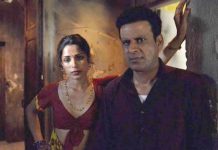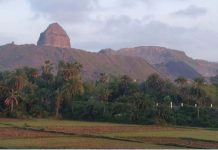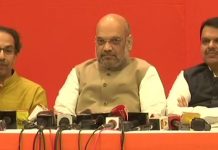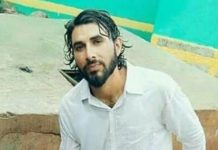A Dalit Organisation In Kerala Is Accused Of Terrorist Links
Ajit Sahi, Editor-at-Large

Photos: Ajit Sahi
AT FIRST sight, 27-year-old VV Selvaraj looks more the assistant manager with Idea Cellular that he was until six years ago than the firebrand — and controversial — dalit leader he has quickly turned out to be in Kerala. He appears even less the man with the dubious distinction of being India’s first dalit activist the police say they are probing for possible links with terrorism, as they indeed are.
It all started on the morning of September 23, 2009, when Siva Prasad, 61, a retiree in an idyllic suburb 50 km north of the state capital Thiruvananthapuram, was brutally attacked with swords on his morning walk and died on the way to the hospital. Once a driver for US Embassy officials in New Delhi, Prasad earned enough to build a house in this suburb of Varkala, where he returned 13 years ago to join his wife, daughter and son.
By evening, police had arrested K Das, a top functionary of the Dalit Human Rights Movement (DHRM), a quasi-political outfit floated by Selvaraj in December 2007, and accused him of masterminding the killing. Over the next few days, six others, including DHRM’S legal adviser, known as ‘Advocate Asokan’, were picked up for Prasad’s murder.
Then, on September 29, Kerala Director- General of Police (DGP) Jacob Punnoose made a stunning claim. “We know the existence of the organisation [DHRM] and its activities,” he told reporters at Kochi. “We are now looking into [allegations] whether it has any terrorist links.”
The state’s topmost police officer’s sensational claim brought sharp focus on Selvaraj’s fledgling outfit. The police are yet to offer any evidence to back the DGP’s claim. (The DGP’s office said he was travelling overseas and unavailable for comment.) Prasad’s widow, Saraswati S, told TEHELKA that her husband had no political interests, and she hadn’t heard of the DHRM until the police told her that the group had killed her husband. Varkala police chief, P Anil Kumar, refused to divulge their leads on DHRM’S involvement in the murder. “They killed Prasad to get public attention and prove their strength in their ranks,” Kumar told TEHELKA.
‘DHRM teaches against drug addiction and alcoholism and encourages dalit education. How can it be a terrorist organisation?’
SHASHIKALA,
44, DHRM Member
In Varkala, a clutch of villages with roughly 40,000 people, the divide among dalits over the DHRM has got sharper since the murder. Shiv Sena activist N Babu — yes, Bal Thackeray’s party has struck roots here — claims that DHRM men regularly attack dalits, including him, who refused to join them. “They are criminals,” Babu says. Several women in his municipal ward, with about 300 dalit families, claim DHRM men often roughed them up.

But then, many others in the same ward swear by the DHRM. “My husband would drink all day and was a total waster,” 29-year-old Kochumol, a mother of three, says. “He turned a teetotaler after attending DHRM study circles.” Soon, she followed him to these Sunday gatherings where, over five hours, Ambedkar’s life would be recalled and advice given on daily affairs. Cultural shows at the end were a big hit. Despite their meagre earnings as wage labourers — they call themselves ‘coolies’ — everyone would gladly pay Rs 30 for the events.
But today, Kochumol’s husband, also named Babu, has gone underground, fearing arrest. Selvaraj says 35 DHRM men are in police custody or jails, picked up over the last three weeks. Hundreds have possibly run away. In village Thachode, Podiyan, 52, and his wife, Shantha, are clueless on the whereabouts of their son, Shivalal. All three are DHRMmembers. The say that on September 22, a day before Prasad’s murder, two plainclothes policemen dragged Shivalal away. “My son has never caused anyone harm,” says Shantha. “I beg the police to free him.” (Varkala police chief Anil Kumar denied that Shivalal was in their custody.)
For now, DHRM has stopped all activities. Having taken anticipatory bail, Selvaraj is lying low. He called this reporter to a village in Ernakulam district, 260 km north of Thiruvananthapuram along the coast, to a house not his own. After the interview (see box), he quickly left the area. Selvaraj’s fear of the police may not be entirely misplaced. When I visited dalits in Podiyan’s village on October 12, about a dozen policemen landed up suddenly and began questioning me. “Your T-shirt had us worried,” their boss said.
‘DHRM activists are the prime accused in Siva Prasad’s murder. Now people want to have nothing to do with them’
V SIVANKUTTY,
BJP District President, Thiruvananthapuram
HIS REFERENCE is to the black T-shirts with Ambedkar’s face, which Selvaraj made mandatory for DHRM members. Selvaraj also mandated they wear jeans, a practice few follow since the arrests began.
Selvaraj may have a point in saying that neither the political parties nor the government has taken kindly to the DHRM. In a state where centuries old anti-dalit violence is legendary, DHRM has spread its influence quickly by articulating the dalits’ desire for dignity. DHRM also issued I-cards to its volunteers. Selvaraj says its total membership topped 10,000. Alarmingly for the political parties, it has political ambitions. A DHRM activist fought — and lost — this year’s Lok Sabha elections as an Independent from the Attingal constituency, winning about 5,000 votes.
Perhaps the BJP, striving to grow influence among Kerala dalits, feels the greatest threat from the DHRM. “I was once a BJP member,” says Selvaraj. “But dalits need to be on their own because every political party treats them as pawns.” For now, though, Selvaraj’s social reform and political ambitions are subordinated to the needs to extricate his and his outfit’s name from charges of terrorism.
WRITER’S EMAIL
ajit@tehelka.com













